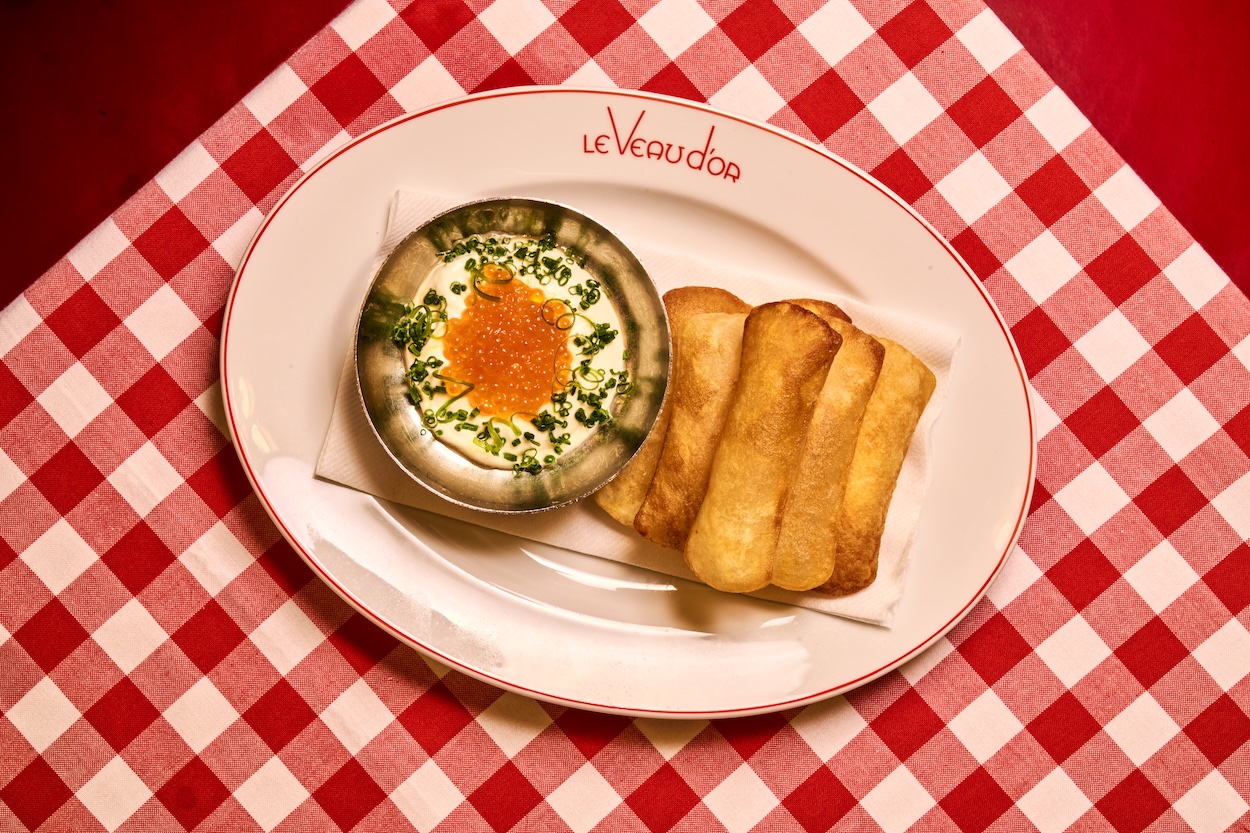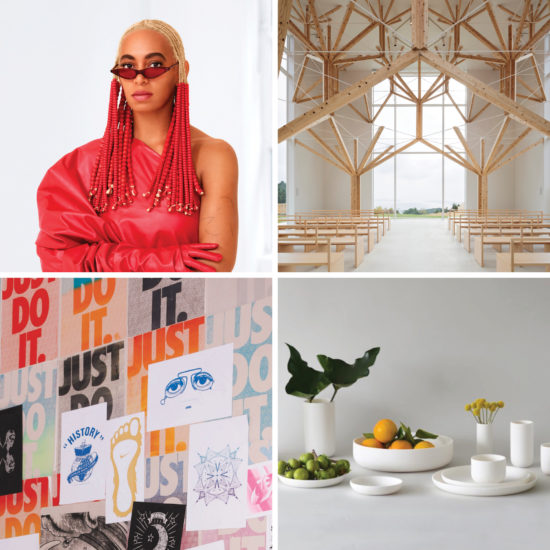First opened in 1937, Le Veau d’Or has hosted the type of New York City history that most restaurateurs and patrons dream of. Propelling the longevity of this petite Upper East Side French bistro is a sense of discretion that welcomed everyone from Jacqueline Onassis, Marlene Dietrich, and Grace Kelly, to Roald Dahl, Ernest Hemingway, Orson Welles, and Jack Nicholson. These figures, along with decades of regulars (and tourists), found charm and comfort in the cuisine and traditional bistro decor.
Designing Le Veau d’Or
Restaurateurs Lee Hanson and Riad Nasr and the Brooklyn-based design firm The Springs Collective looked to the French bistro’s storied history for an impeccable interior upgrade that gives the illusion of no change at all.
BY DAVID GRAVER March 03, 2025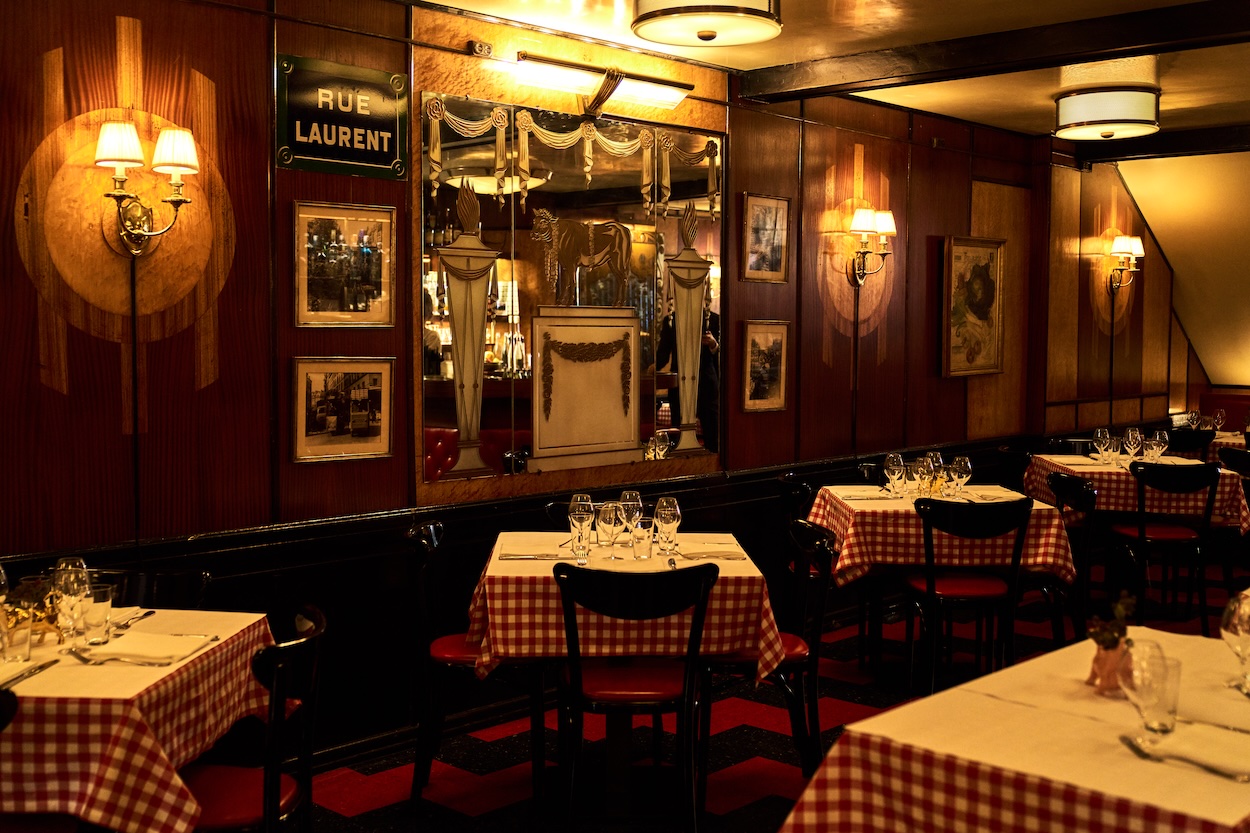
In 1985, Robert Tréboux acquired the restaurant, revitalized it, and shepherded its legacy until his passing in 2012. When lauded chefs Lee Hanson and Riad Nasr learned of Tréboux’s death, they went to great lengths to contact his daughter, Catherine, and offer support and voice interest in Le Veau d’Or’s future. From chef Daniel Boulud’s Restaurant Daniel in the early ‘90s to Keith McNally’s Balthazar and Minetta Tavern, Nasr and Hanson cut their teeth in some of New York City’s most respected kitchens. In 2018, they opened Tribeca staple Frenchette—and shortly thereafter, Catherine reconnected with them.
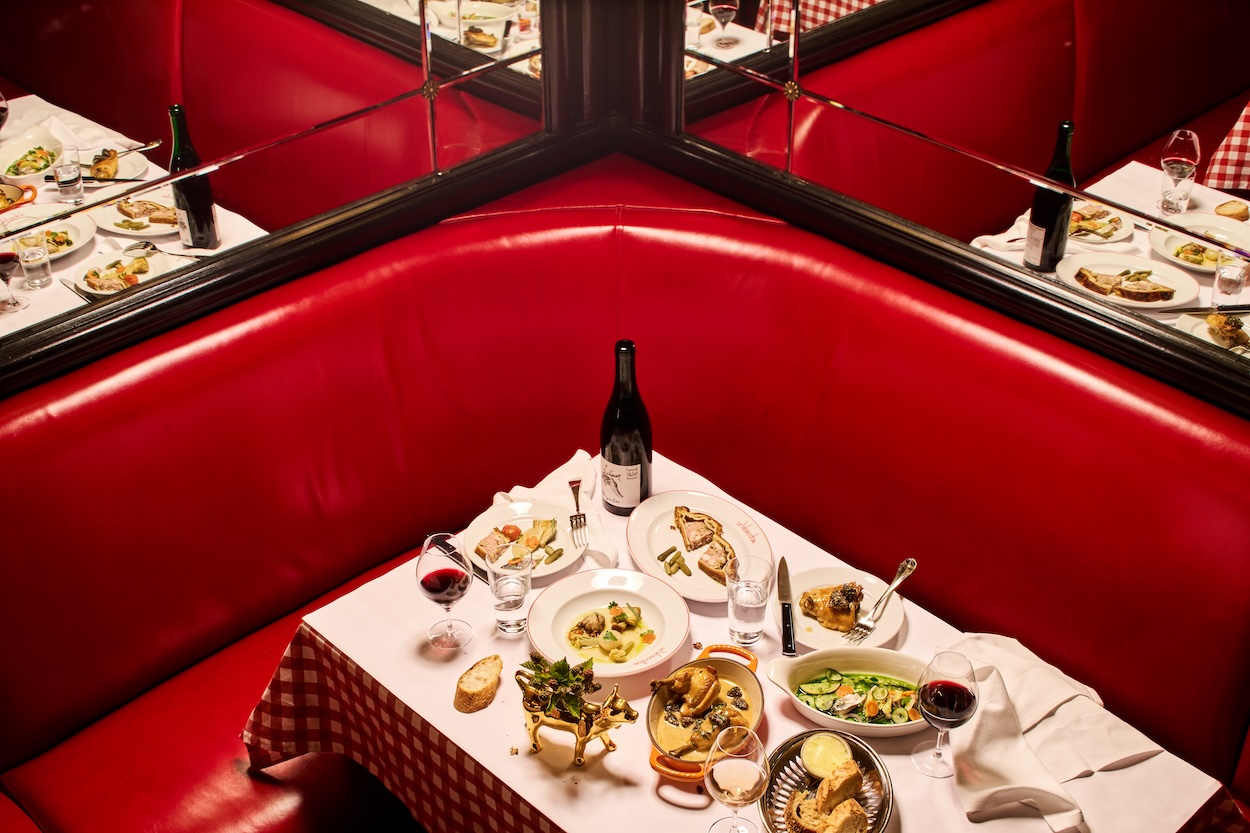
“She was interested in moving on,” Nasr tells Surface. “We were there the next day hammering out a deal. From our first call with her to taking it over was about five or six years, and then we had five years of a build out.” In July 2024, Le Veau d’Or reopened—and despite the fact that the interiors had been stripped down to their studs, it looked and felt nearly the same. And that was the point.
There were some things that they felt could use improvements. “The ceilings for instance,” Hanson says. “They had foam tiles. There were examples like that, that we could improve, that didn’t change the way everything felt but made it a touch better. There were a lot of pictures on the walls before, and behind it was this beautiful wood paneling. We didn’t hang as many back up so that people could see the wood. Even the floor, which is a similar floor to the vinyl that was there before, is a different pattern, which we saw on a postcard of Le Veau d’Or from the ‘50s. We brought it back to that pattern.”

Amy Butchko and Sam Buffa, founders of the Brooklyn-based design studio The Springs Collective, first saw the space in 2019. “We looked at it and it was dusted up. It hadn’t been remodeled since the ‘80s. It still had the charm but it needed some love,” Buffa says. While they were on site analyzing the architecture and design, there was only one guest. “I gasped when I saw him because I realized it was Gay Talese, a giant of the New York literary scene from the midcentury,” Butchko says. “To be sitting in the dining room with no one else but him made me realize the importance of the space to New York’s cultural scene, and that it could hopefully continue on into the future.”
Butchko and Buffa were drawn to the small footprint of the space, as well as the fact that it is below street level. To them, it felt like an intimate clubhouse. Rather than maintain it, they wanted to take the design further back to Le Veau d’Or’s heyday. “We did Frenchette with Riad and Lee, so we have a baseline working understanding and a shared sensibility when it comes to aesthetics,” Butchko says. “We all knew that we needed to retain what worked and strip away that which didn’t. There were a number of structural changes that also needed to happen to the space, so we needed to create items that were rooted in historical accuracy without it feeling like a film set.”
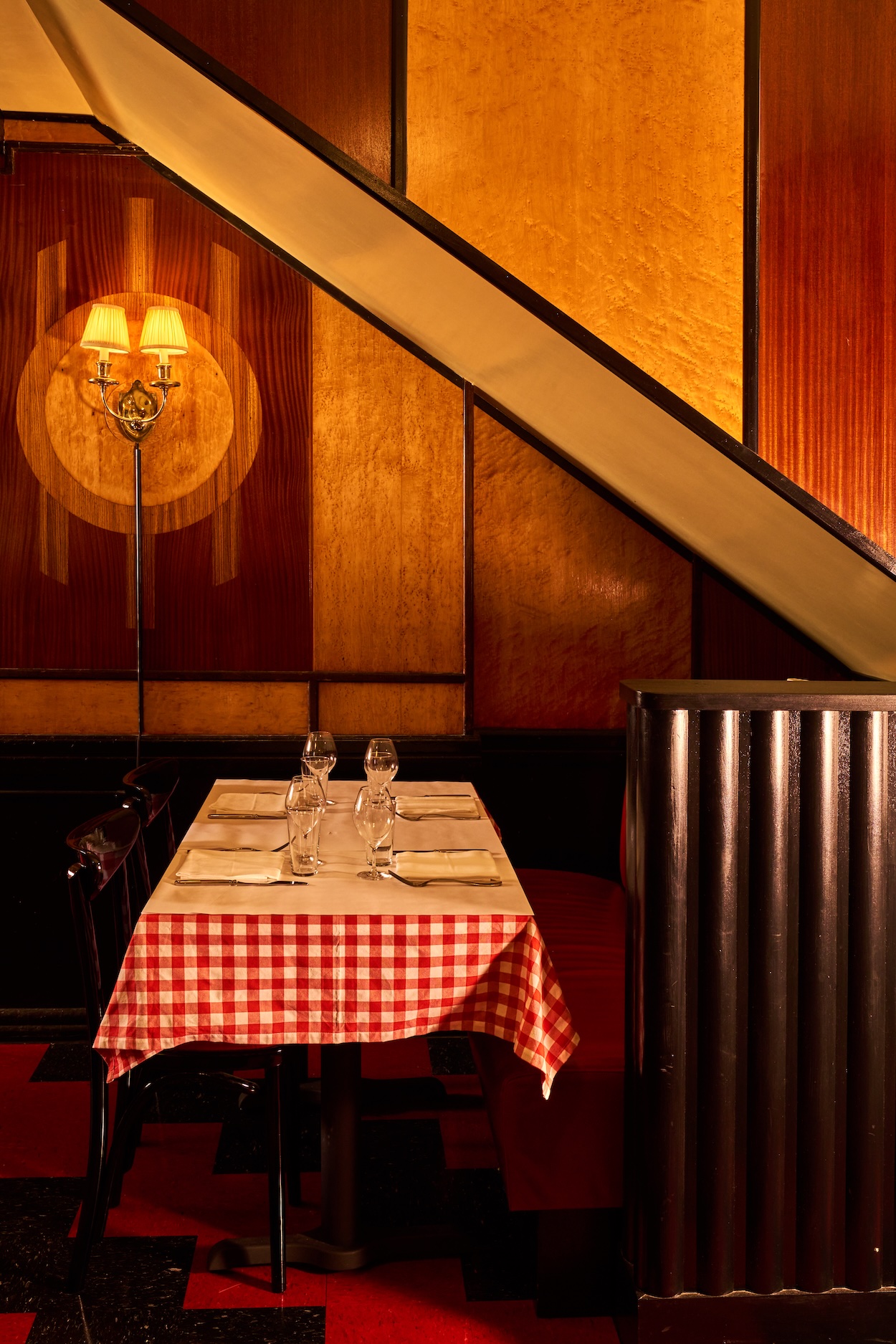
To step in today is to be awash in the signifiers of a traditional French bistro. “Every surface was not only touched but most were demolished and recreated,” Butchko says. “There are a few things that are original, like a wood wall. But the vast majority of the surfaces are new. That being said, we didn’t want to put our imprint on this as a Springs Collective project. We wanted this to feel honest and authentic.”
For example, she adds, “originally there were red leather banquets and booths. We tried to replicate that. There were understated, black lacquered French bistro chairs. We found new ones and we made custom cushions. A lot of it was doing our best to take that which existed and elevated it and refresh it.”
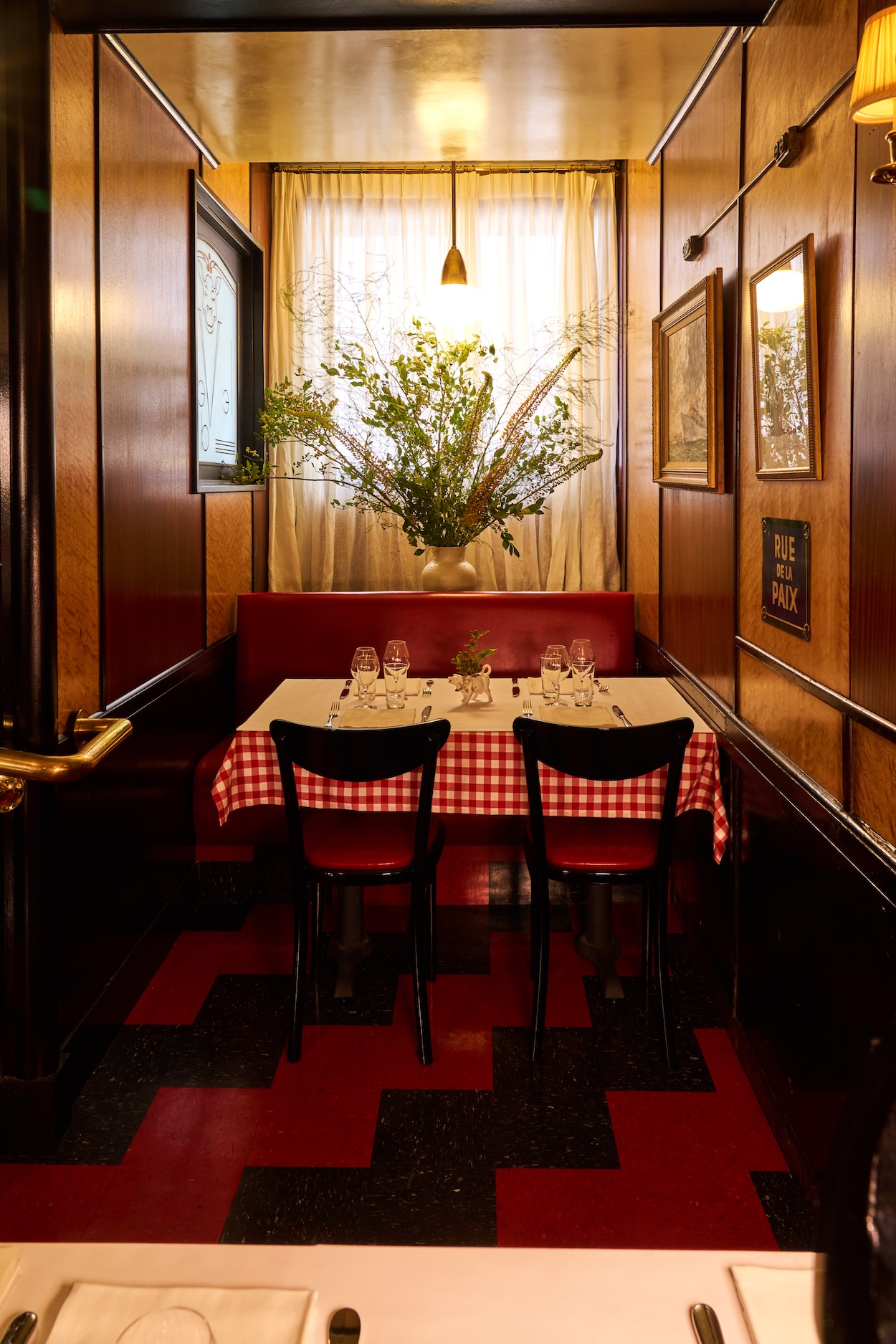
Though the floor plan is almost identical, they pushed out some—removing a coat room and adding the stair. “We were able to gain space because the stair is angled,” Buffa says. “We were able to throw a booth in there where there wasn’t before.” To compensate for the size of the space, Buffa and Butchko kept everything low—tables, booths, even the bar. This forgoes cramped feelings for a sense of coziness.
“The biggest compliment is that it looks like we didn’t do anything,” Butchko says. “People think that every single piece existed and we went in there with a scrub brush and cleaned it up. That was the goal, that people get the feeling that it’s been there longer than they have—that they cannot really see where the design is.”

Integral to this is the lighting, which they had to devise entirely because of Le Veau d’Or’s subterranean placement. “Overlighting can rob you of a feeling of being transported into another time or place,” Butchko says. “We tried to assess what worked originally and supplement it with additions. There were ceiling fixtures and a lot of picture lights. We replaced many of the picture lights, and kept some of them, and then we decided we needed to add as many levels of light as possible.” They discovered original inlaid wood medallions and inside of each medallion was a junction box, meaning that at one point in pre-photographic history, there were sconces on the walls. They decided to bring those back. This is not a new restaurant designed with spots and recessed lighting. It stays true to the period that it existed in.
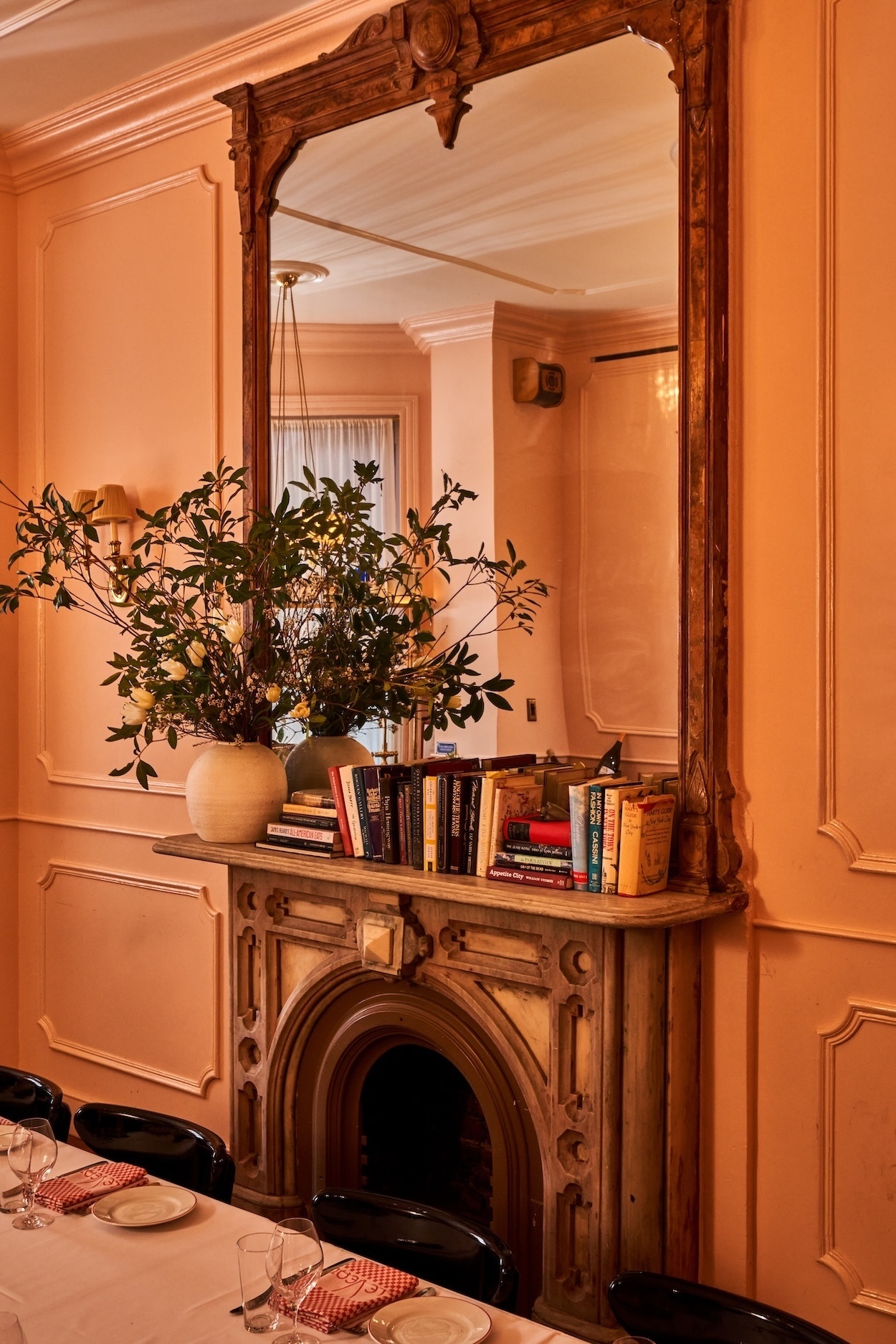
Nasr and Hanson also acquired the floor above Le Veau d’Or. “It was the office, and storage, and back in the day it was a hair salon,” Hanson says. Then envisioned it as a private dining space. “You have a restaurant that people want to come to, they’ll also want to celebrate big things with you. It’s good to have that financially for us. It allows us to do what we are doing downstairs.”
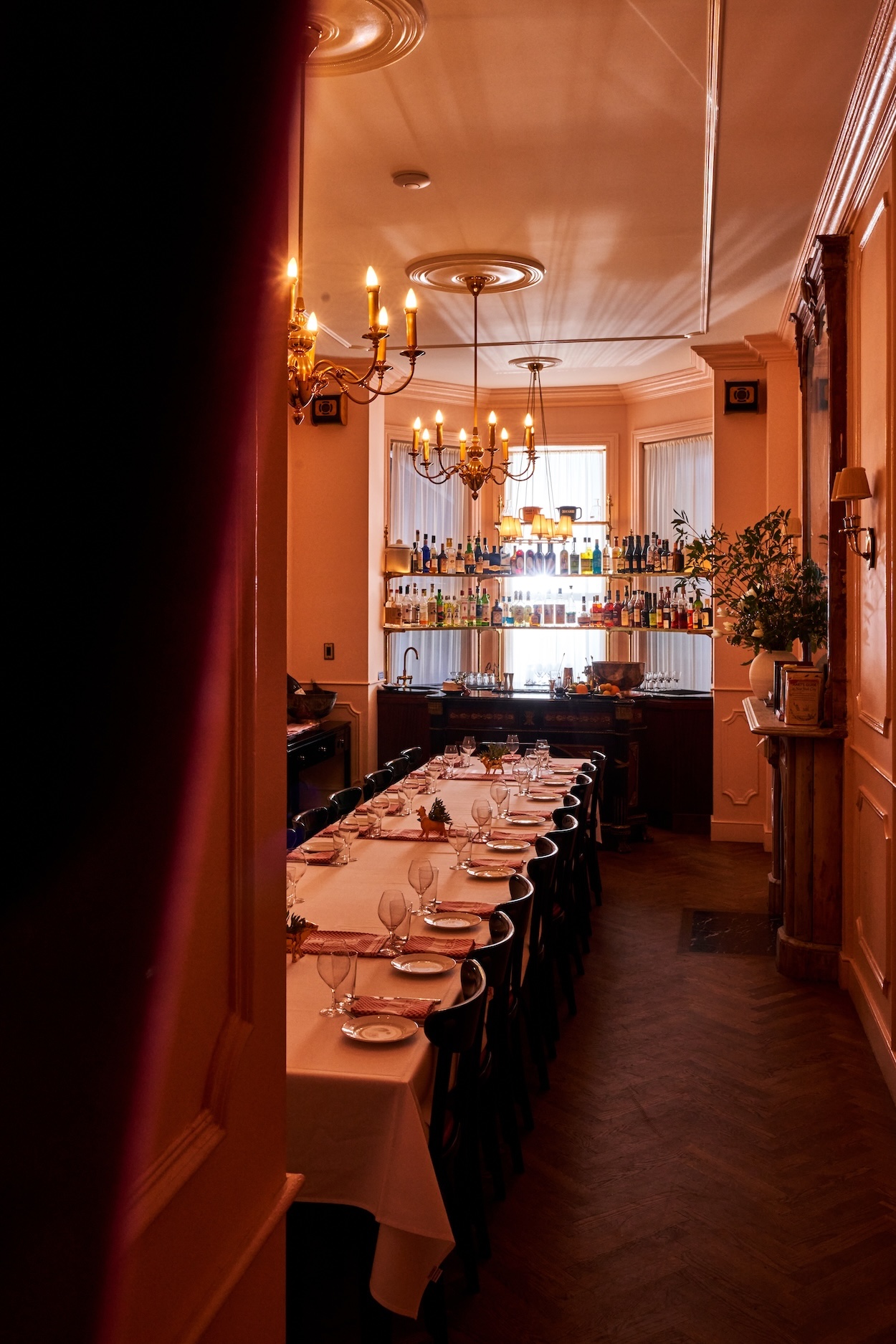
“The goal was to imagine it as if it was an apartment above a restaurant in Paris,” Buffa says. Inside, the fireplace and overmantle mirror are original pieces. “There was an incredible double-wide archway opening between the two upstairs rooms, with beautiful chunky molding that had so much age and patina,” Butchko describes. “We desperately tried to save it, but ultimately had to demo it. Instead, we were able to take inspiration from it and develop a rhythm that gave us a basic cadence.” They furnished it with antique chairs. The front bar was bought at auction; the back bar was a custom fabrication.
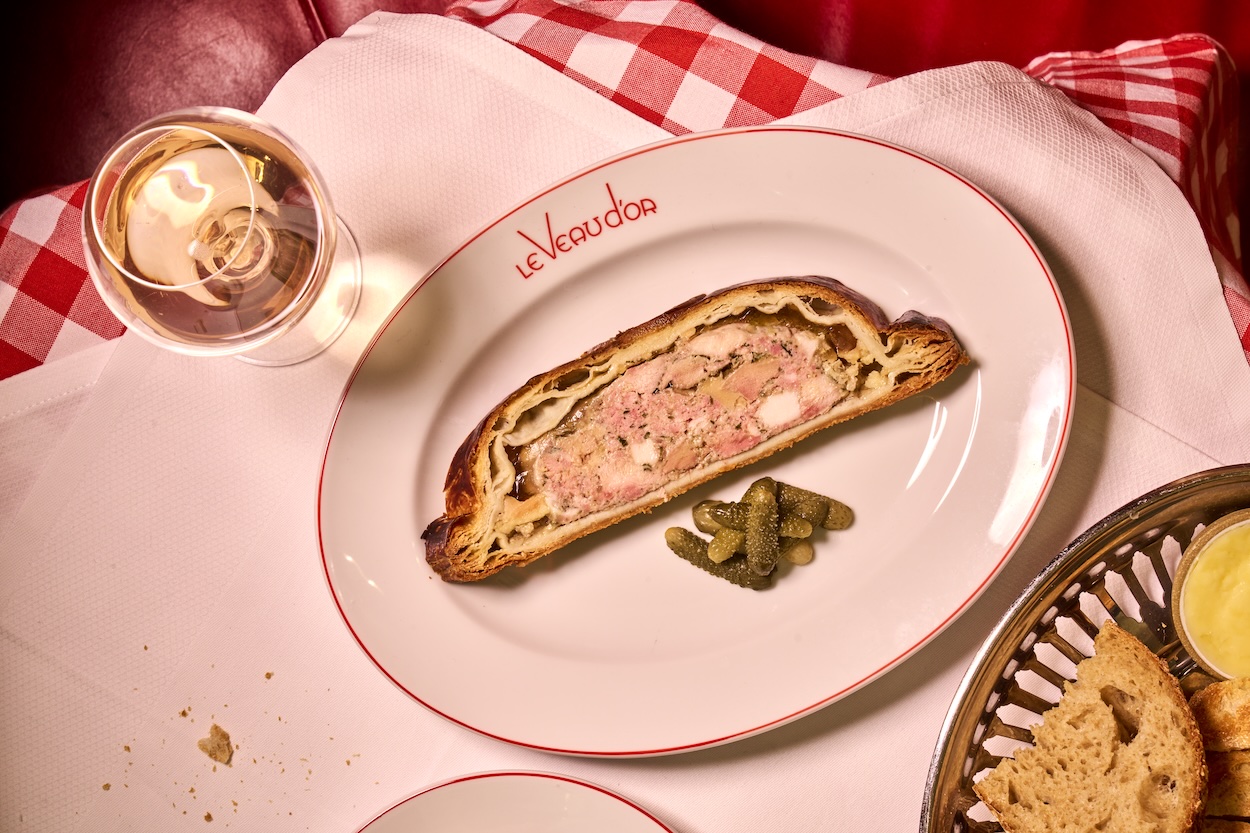
“We felt like let’s begin with these classics,” Hanson says of the three-course, prix-fixe menu, which they wanted to align with the spirit of the decor. “But then we dug deeper into the old menu. There are a lot of classics that we had to have, but we workshopped them to have better quality and presentation. It’s fun to dive into a cuisine like this. It’s the perfect place to present it, historically, in a small, comforting space where you want to sit down and go for a culinary ride.”
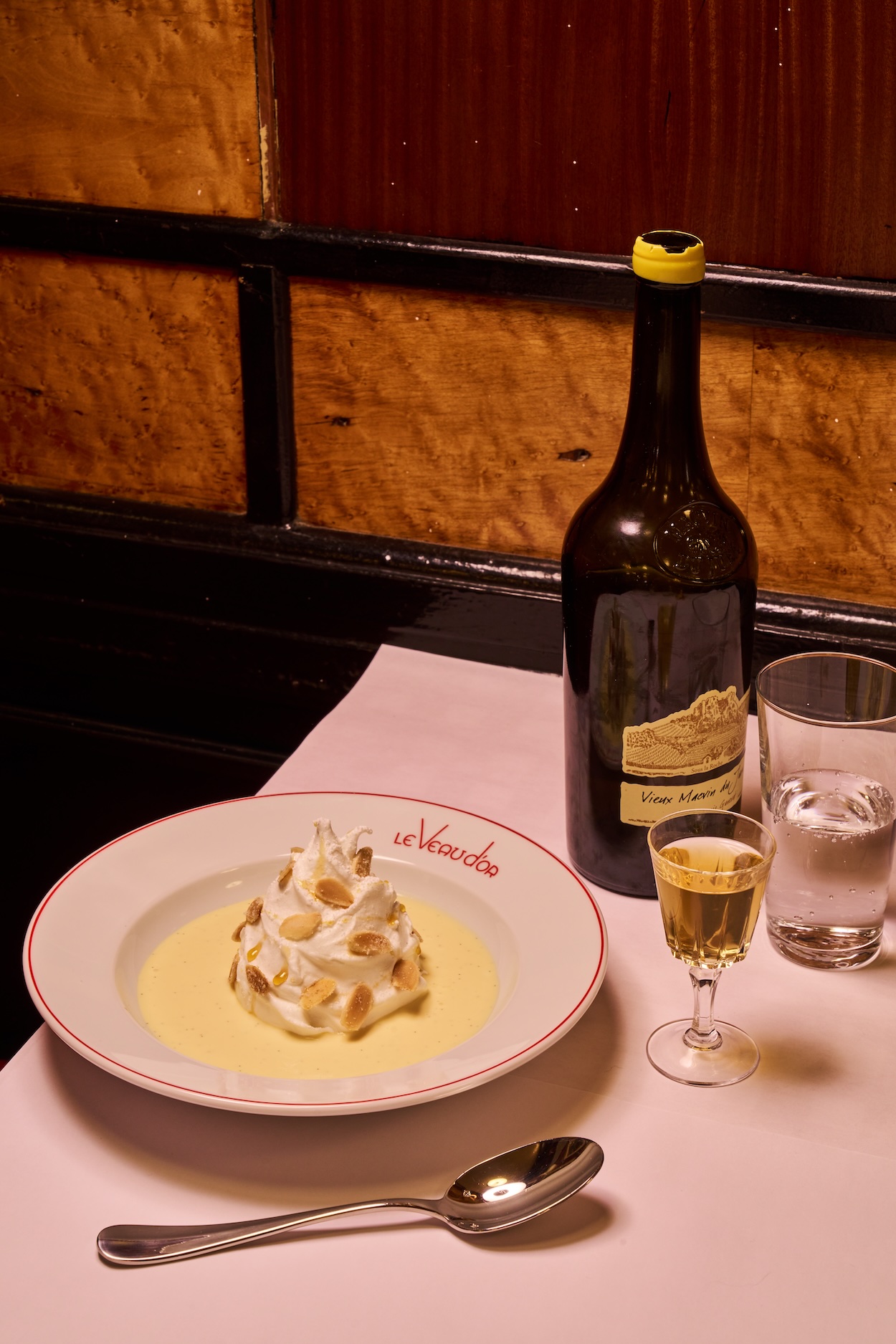
Hanson notes that they’ve already begun accruing repeat guests, and to keep them coming back for years will require culinary creativity. That said, demand is very high for the 14 tables in the room, as well as the handful of bar stools (where only drinks are served). “People had a strong connection to the restaurant,” Buffa says. “It’s nice to have a new enthusiasm for something that was already there.”
